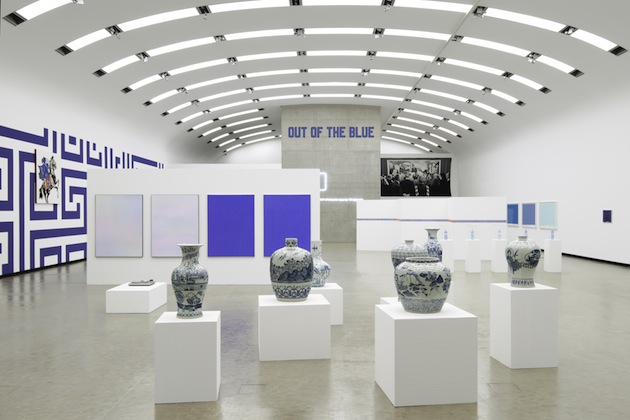
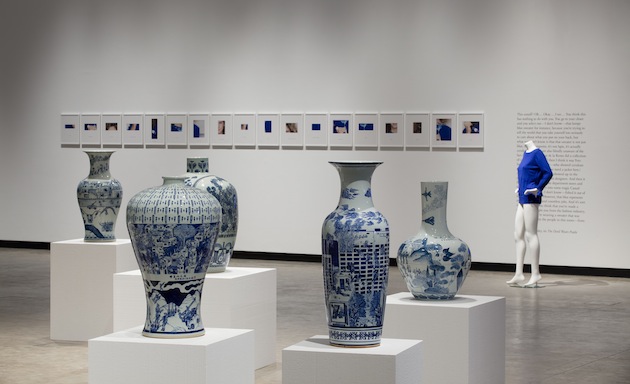
Scattered across Kunsthalle Wien’s hall lay a symphony of blue objects, surfaces, thoughts and ideas, bringing together a cosmology of meanings. Blue Times, a group exhibition featuring more than 30 international artists, presents positions dealing with the uses and meanings of the colour blue in different eras and contexts. Through investigating the specific iconology of the colour blue, the exhibition sets forth transversal ways of approaching the world of art, of images and of representations: How can we use a colour as a way of seeing, as a way of understanding our socio-political histories? The exhibition presents two positions: one that mirrors the overwhelming character of blue, and the other, correlated position, investigates its socio-political function as it shifted towards a certain conformist politics of representation.
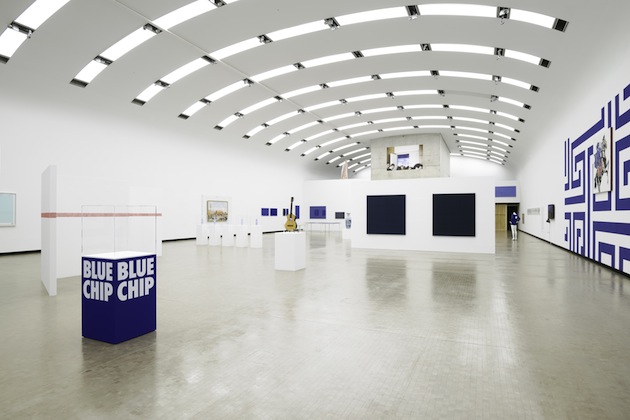
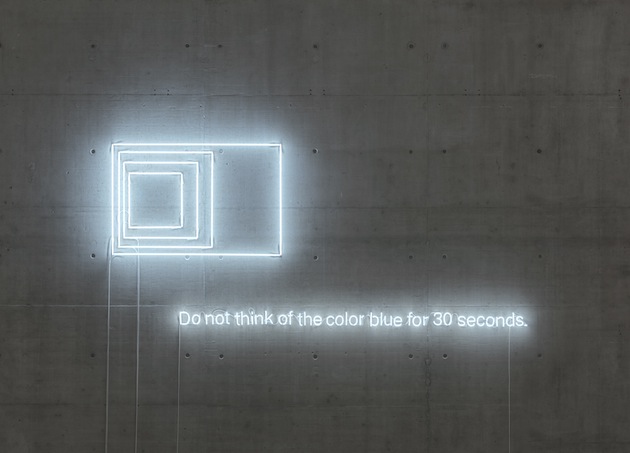
The artists included in the show represent these two positions: for British artist and filmmaker Derek Jarman, blue is a filter in absentia: touched by the HIV virus, he was not able to see the colour blue anymore. He dedicated pop odes to the colour, particularly in the eponymous film Blue. Of course, French artist Yves Klein’s famous International Klein Blue (IKB), which shifted the discourses of the authenticity of the pure idea and the validation of art as creation. Liam Gillick, on the other hand, is not interested in colour and form as such but as legacies of abstraction, as relics of modernist art theory and claims for universality. Most often, American artist Lawrence Weiner’s composed texts describe physical instructions, processes, structures and materials. However, the in-situ piece Out of the Blue plays with the immaterial dimension of the colour blue as well as its presence in or infiltration into our idiomatic language to convey mood and emotions, and can be read as an ironic comment on the whole exhibition endeavour. In a more literal way, EU (2011–2014) by Dutch artist Remco Torenbosch features utterances of different blue shades that circulate in the monolithic European Union, presumably symbolising alliance. Under the title China (2012), Lebanese artist Raed Yassin exhibits a series of seven porcelain vases investigating Lebanon’s struggle to come to terms with the aftermath of its civil war, a struggle marked by uneasy amnesia.
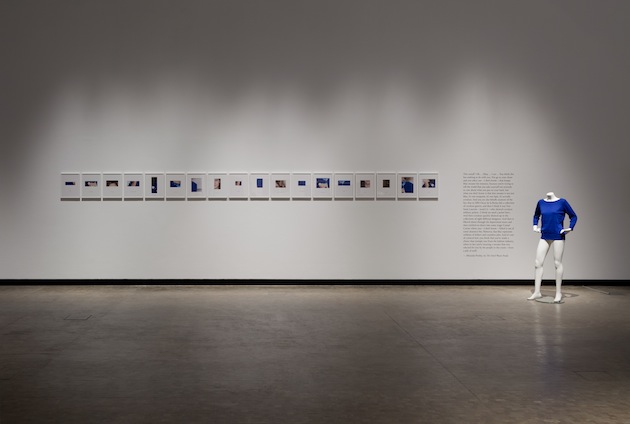
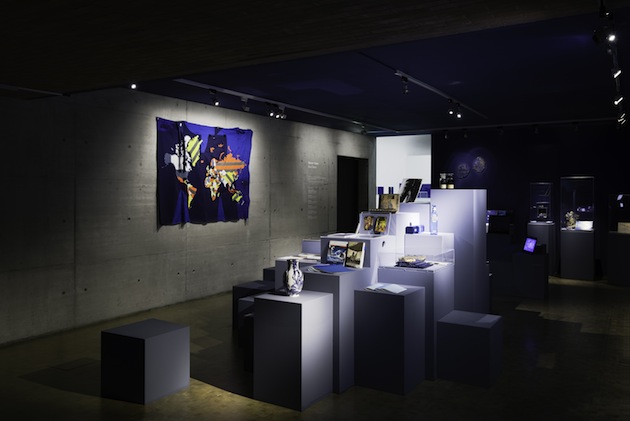
In the West, the omnipresence of blue in the domain of public design and private comfort is rooted in its psychological reception: the European eye apparently considers it to be the most pleasant colour. Hence, blue is both the perfect instrument to control minds and bodies and a tool to trace gender, class and political belongings. Blue is the anti-communist colour par excellence. Blue was also chosen as the colour of the European Union, selected to symbolise unity in difference, as well as the capacity to unite in consensus. Therefore, colour is first and foremost a social matter, a range of codes and values that are marked historically and geographically. Through colour, taboos and prejudices circulate and influence us, our environment, our language and our imaginary.
Rujana Rebernjak – Images courtesy of Kunsthalle Wien
